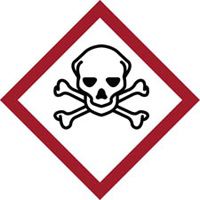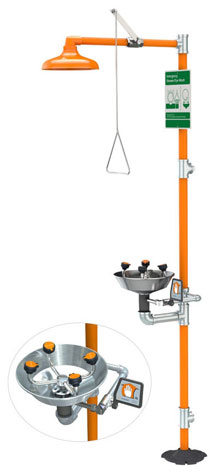| The Home page of ILPI's Safety Data Sheet (SDS) Resource, the leader in SDS information since 1995! | |
| The history and philosophy behind this resource. | |
| A curated collection of books and reference materials concerning Safety Data Sheets and closely related topics. | |
| Paste your plain text SDS into the SDS-Demystifier, and it will be converted into a hypertext-enriched document with links to detailed explanations of each key term. | |
| An extensive list of frequently asked questions about Safety Data Sheets including regulations, content, compliance, and more. | |
| A humorous take on Safety Data Sheet jargon. Fill in the blanks on our entry form to generate a personalized Unsafety Data Sheet to share with your coworkers. | |
| Since 1995, we've maintained this massive curated list of the best places to find Safety Data Sheets on the Internet. | |
| Way more than a glossary, this hypertext-enhanced resource covers hundreds of SDS-related terms and expert knowledge. Each entry includes both the SDS relevance and links to additional authoritative resources. | |
| Archived results of Safety Data Sheet related polls taken by some of our millions of site visitors | |
| You are here! The OSHA regulations behind SDS regulations, including the inspection guidelines and over 400 official interpretations letters under the Hazard Communication Standard | |
| Commercial suppliers of SDS authoring and management software as well as cloud compliance services. | |
| Commercial companies that will create SDS's for your specific needs as well as SDS translation companies. |

Safety signs, banners, and scoreboards? Get yours at Safety Emporium!
| Title: 03/24/2015 - Requirement for Unknown Acute Toxicity Statement | |
| Record Type: Interpretation | Standard Number: 1910.1200 |
OSHA requirements are set by statute, standards and regulations. Our interpretation letters explain these requirements and how they apply to particular circumstances, but they cannot create additional employer obligations. This letter constitutes OSHA's interpretation of the requirements discussed. Note that our enforcement guidance may be affected by changes to OSHA rules. Also, from time to time we update our guidance in response to new information. To keep apprised of such developments, you can consult OSHA's website at https://www.osha.gov
March 24, 2015
Ms. Lu Yu
Phillips 66
1768-03 Phillips Building
Bartlesville, Oklahoma 74003-6670
Dear Ms. Yu:
Thank you for your letter to the Occupational Safety and Health Administration (OSHA). Your letter has been referred to OSHA's Directorate of Enforcement Programs for an answer to your specific question regarding the requirements for listing toxicity information about the ingredients of a hazardous chemical mixture on the safety data sheet (SDS) under OSHA's Hazard Communication Standard (HCS 2012), 29 CFR 1910.1200. This letter constitutes OSHA's interpretation only of the requirements discussed and may not be applicable to any questions not delineated within your original correspondence. Your question is paraphrased below, followed by our response. We apologize for the delay in response.
Background: In your letter, you referred to HCS 2012 Appendix D, Safety Data Sheets (Mandatory). In Table D.1, section 2 of the SDS contains the minimum required information for hazard identification. Your question refers specifically to Subheading (d), which states,
Where an ingredient with unknown acute toxicity is used in a mixture at a concentration ≥1% and the mixture is not classified based on testing of the mixture as a whole, a statement that X% of the mixture consists of ingredient(s) of unknown acute toxicity is required.
Question: Is the "unknown acute toxicity" statement only required when there is no acute toxicity information on all routes of exposure (oral, dermal, and inhalation)? For example, if the acute toxicity values are available for the acute oral and dermal exposure for an ingredient and the acute inhalation toxicity data is missing, should a statement of "X% of mixture consists of ingredient(s) of unknown acute inhalation toxicity" be included in section 2 of the SDS?
Response: The unknown acute toxicity statement is only required on the label and the SDS where the chemical mixture is already classified as acutely toxic for a particular route of exposure, and there are one or more other "relevant ingredients" (as defined under 29 CFR 1910.1200, Appendix A, A.1.3.3) of unknown acute toxicity for that particular route.
The approach in HCS 2012 for classifying mixtures for acute toxicity is tiered, and is dependent on the amount of information available for the mixture itself and for its ingredients. See A.1.3.1. Where the mixture has been tested to determine its acute toxicity, it is classified according to the criteria provided in Table A.1.1. See A.1.3.4. If there is no acute toxicity data for the mixture, A.1.3.5 requires that classification be based on bridging principles. If bridging principles cannot be applied, classification is based on the ingredients of the mixture. See A.1.3.6. Where there is data for all ingredients, an acute toxicity estimate (ATE) is followed, per A.1.3.6.1.
HCS 2012 specifies that classification of mixtures for acute toxicity may be carried out for each route of exposure, but is only required for one route of exposure as long as this route is followed (estimated or tested) for all ingredients and there is no relevant evidence to suggest acute toxicity by multiple routes. Where there is evidence of acute toxicity by multiple routes of exposure, classification is to be conducted for all appropriate routes of exposure. See A.1.3.2.
Where data are not available for one or more ingredients, the classification procedures in A.1.3.6.2 are followed. In this situation, A.1.3.6.2.3 of HCS 2012 provides:
In the event that an ingredient with unknown acute toxicity is used in a mixture at a concentration ≥1%, and the mixture is not classified based on testing of the mixture as a whole, the mixture cannot be attributed a definitive acute toxicity estimate. In this situation the mixture is classified based on the known ingredients only. (Note: A statement that X percent of the mixture consists of ingredient(s) of unknown toxicity is required on the label and safety data sheet in such cases; see Appendix C to this section, Allocation of Label Elements and Appendix D to this section, Safety Data Sheets.)
Classifiers can present the unknown acute toxicity information on ingredients either as a single statement or as multiple statements, where routes are differentiated. If there is acute toxicity by more than one route of exposure and the classifier chooses to provide one statement in order to save space on the label or SDS, then the route with the highest total percentage unknown toxicity from one or more relevant ingredients will be used in the statement. The single statement on the label or SDS would state that "X% of the mixture consists of ingredient(s) of unknown acute toxicity."
Because it is possible to have ingredients with unknown toxicity for more than one route (e.g., oral, dermal, inhalation), differentiating the unknown toxicity statement by route is recommended.1 As such, classifiers may also communicate the information as:
X% of the mixture consist of ingredient(s) of unknown acute oral toxicity
X% of the mixture consists of ingredient(s) of unknown acute dermal toxicity
X% of the mixture consists of ingredient(s) of unknown acute inhalation toxicity
In the example you provided (see question above), we will assume there is no relevant evidence for the ingredient suggesting acute toxicity by the inhalation route. If so, and your mixture is not classified for the inhalation route, then an unknown acute toxicity statement would not be needed for inhalation.
Thank you for your interest in occupational safety and health. We hope you find this information helpful. OSHA requirements are set by statute, standards, and regulations. Our interpretation letters explain these requirements and how they apply to particular circumstances, but they cannot create additional employer obligations. This letter constitutes OSHA's interpretation of the requirements discussed. From time to time, letters are affected when the Agency updates a standard, a legal decision impacts a standard, or changes in technology affect the interpretation. To assure that you are using the correct information and guidance, please consult OSHA's website at www.osha.gov. If you have any further questions, please feel free to contact the Office of Health Enforcement at (202) 693-2190.
Sincerely
Thomas Galassi, Director
Directorate of Enforcement Progams
1 Revision 4 to the GHS has clarified that the statement of unknown acute toxicity should be differentiated by route (see GHS Rev. 4, paragraphs 3.1.3.6.2.2 and 3.1.4.2), and OSHA recommends classifiers follow this guidance.
The original official public domain version of this document is available from OSHA at https://www.osha.gov/laws-regs/standardinterpretations/2015-03-24.

